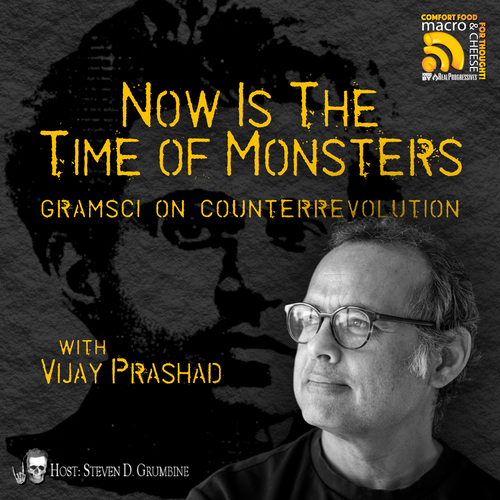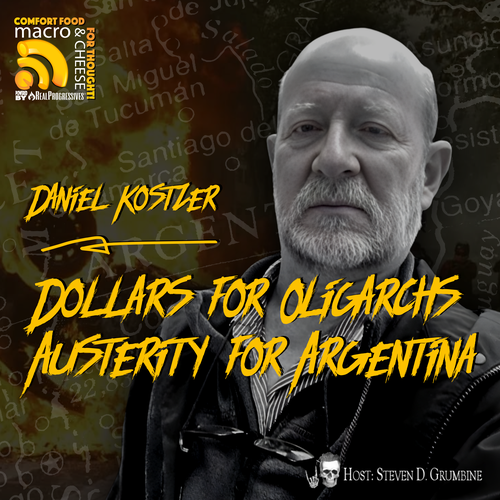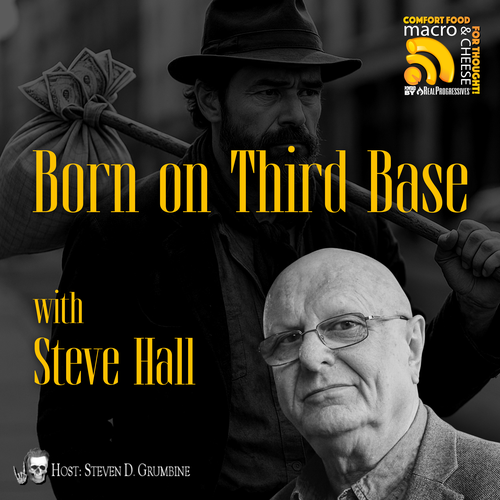My friend Maren Poitras’ Finding the Money does the vital work of dragging Modern Monetary Theory (MMT) out of academic journals and into the public square; but like a union rep forced to negotiate at a table built by bosses, the film’s framework bends under the weight of capital’s myths. Stephanie Kelton rightly hammers that “currency issuers can never run out of money” (Kelton 2020) while the documentary pulls its punches where it hurts most: exposing how the ruling class weaponizes deficit hysteria to strangle working-class futures. The blame for this shouldn’t be laid at Poitras’s feet; it’s an unfortunate element of many MMT stories.
The film brilliantly shows dunces like Treasury officials wringing their hands over “funding” Social Security, as if the government is some broke diner owner counting pennies rather than the creator of the dollar itself. This is where Finding the Money needs Clara Mattei’s razor-sharp class analysis: when she writes that “austerity is not economic necessity but class war” (Mattei 2022), she’s naming the game. That’s the peanut butter to MMT’s chocolate! The documentary lets politicians and bankers off the hook by framing monetary ignorance as mere confusion rather than what it really is: a systemic con job to make workers believe schools and hospitals are “unaffordable” while Pentagon budgets bloat like a corpse in summer. This secondary confusion myth is a recurring hyper-courteous MMTism that sometimes diminishes its own walloping wake-up call.
Where the film truly shines is its demolition of household budget analogies – those capitalist fairy tales that pretend the US Treasury operates like a family choosing between groceries bills and rent. Kelton’s explanation of money creation is the sledgehammer this lie deserves. But when it comes to showing who benefits from these myths, Finding the Money treats monetary policy like a faulty appliance needing repair rather than a butcher’s knife held to labor’s throat. It also leaves the viewer with the notion that all private sector savings are the same rather than the class war that can be truly exposed through an analysis of stratification.
To add context, consider what’s missing: the footage of Wall Street bankers high-fiving over interest rate hikes that jack up their bond yields while crushing indebted workers. The montage of CEOs blaming “inflation” for price-gouging as they report record profits (Weber 2023). The truth Mattei exposed – that economic “rules” are just class weapons dressed up in math – gets lost in the film’s focus on educating elites rather than arming the working class.
The documentary’s biggest blind spot? It doesn’t follow the money all the way to the picket lines. It doesn’t show the folks without teeth skipping dental care because of austerity. The student debtors losing their homes. The broken families. Auto workers striking for wage hikes, CNBC screaming about inflation. When tenants demand rent control, landlords howl about “market fundamentals.” Every time workers fight for more, capital shrieks “we can’t afford it” while amassing profit they didn’t earn but extracted. How much more powerful would the film be if it connected these dots?
This isn’t just about understanding money. It’s about seizing it. The film could’ve shown Puerto Rican workers building solar grids after privatized power failed them (Rapin, 2023) or Jackson, Mississippi’s solidarity economies (Cooperation Jackson, 2019) – proof that when we stop begging and start building, the “money” magically appears. We get plenty of talking heads but not enough torch-bearing workers marching on central banks which work for, and at the legal behest of, a completely captured Congress.
Finding the Money is a good first step, like a union organizer’s introductory pamphlet. But unless it names capitalism boldly and without reservation as the counterfeiter of artificial scarcity, unless it shows workers how to wrestle the decision making and money-creation power from the suits who’ve captured congress and hoarded it like dragons on a pile of gold, it’s only telling half the story. The other half? That’s written in the streets. But the streets need the information in this wonderful but inadequate documentary. Everyone needs to see this film; then start investigating class.
Watch Finding the Money for free on YouTube.
It is also available to rent or buy at findingmoneyfilm.com
References:
Kelton, S. (2020), The Deficit Myth
Mattei, C. (2022), The Capital Order
Weber, I. (2023), Taking Aim at Sellers Inflation
Katherine Rapin (2023), The Grassroots Movement That Built Puerto Rico’s First Community Owned Microgrid
Cooperation Jackson (2019) The Just Transition, Economic Democracy, and the Green New Deal









